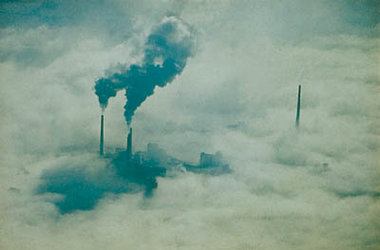Volcanoes
Many volcanoes have been 'dead' for centuries while others are only 'sleeping', some deeply, others less so. Although most volcanic eruptions are minor rumblings and create little damage, now and again major eruptions occur bringing destruction and the loss of life.
Although the number of eruptions per year remains stable, the damage caused and the loss of life is increasing due to the growth in population and the tendency in some areas to build housing and other infrastructure on volcanic slopes or in the possible path of lava.
In January 2002, up to half a million people fled their homes and at least 50 were killed as scorching lava rolled down the slopes of Mount Nyiragongo in eastern Congo, overwhelming 14 villages and reaching the regional capital Goma. The sky above the capital was darkened by sulphurous clouds of volcanic dust and steam, a health risk for all those in the vicinity and a danger to the environment. In Italy, one of the countries most at risk from volcanic activity, 2001 saw a major eruption of Etna, Europe’s most active volcano. Although this was the first major eruption in 10 years, Etna bursts into life every few months.

Envisat has much to offer volcanologists and civil protection authorities. ASAR, AATSR and MERIS can point simultaneously towards the most dangerous volcanoes to keep a careful watch over their activities. Thanks to the spatial coverage that these sensors can achieve, they can provide regular and accurate updates over large volcaning areas. The imaging instruments on board Envisat can also be used to monitor other phenomena arising from volcanic activity such as lava flow, ground fissures, earthquakes and mud slides, as well as the environmental effects of the gas and ashes released by an eruption.
Vulcanologists need continuous data over a long period to allow them to evaluate the level of risk and increase their knowledge of volcanoes and their behaviour. The instruments on board Envisat have the ability to supply them with this much-needed information and provide accurate maps of areas at risk. In some cases only a satellite is capable of providing this information as some areas are difficult to reach and it can be too dangerous to approach active volcanoes.











